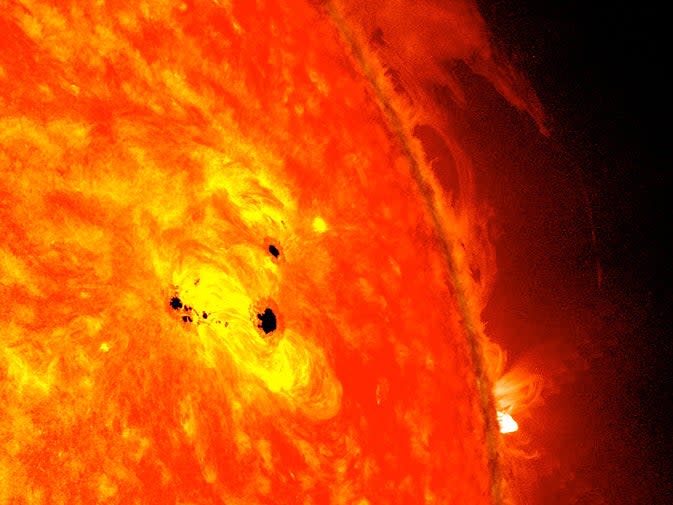Nasa announces ‘fundamental physics’ breakthrough to explain why the Sun is exploding

A dramatic outburst from the Sun has helped Nasa discover new “fundamental physics” to help understand why the Sun explodes, which could be a breakthrough in predicting space weather.
The explosion contained three different types of solar eruptions – the first time such an event has ever been observed – coronal mass ejections (CMEs), jets, and partial eruptions.
CMEs and jets are very similar in that they send energy and particles into space, but the former is a huge bubble made from the Sun’s magnetic field, while a jet is a narrow burst of solar material. Partial eruptions, meanwhile, begin at the surface but do not gain enough energy to penetrate it, falling back onto the surface of the flaming ball of gas.
The presence of all three explosions allows scientists to use their understanding of one type of burst to study the other two – and hypothesise that these events most likely have the same origin.
“This event is a missing link, where we can see all of these aspects of different types of eruptions in one neat little package,” said Emily Mason, lead author on the new study and solar scientist at Nasa’s Goddard Space Flight Center. “It drives home the point that these eruptions are caused by the same mechanism, just at different scales.”
This breakthrough helps scientists predict when large-scale eruptions might cause disruptions on Earth, by finding the root cause of the trigger. In some instances CMEs, like solar flares, can release huge clouds of high-energy particles which can be dangerous to astronauts, satellites, and occasionally other technology like energy grids.
Further study could allow Nasa to know when an eruption could threaten Earth and Mars several hours in advance, giving them more time to take precautionary measures, and help protect humanity’s endeavours in space.
Read More
New York was caught in a storm, and I was in my element
Solar flares: what are they, what causes them, and how dangerous are they to humans?
The backstreet San Francisco tech firm that triggered a worldwide internet freakout

 Yahoo Finance
Yahoo Finance 